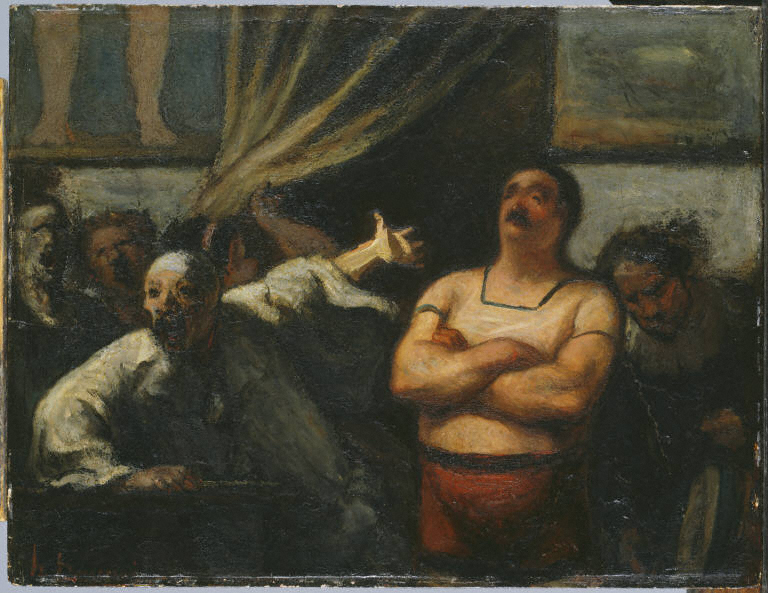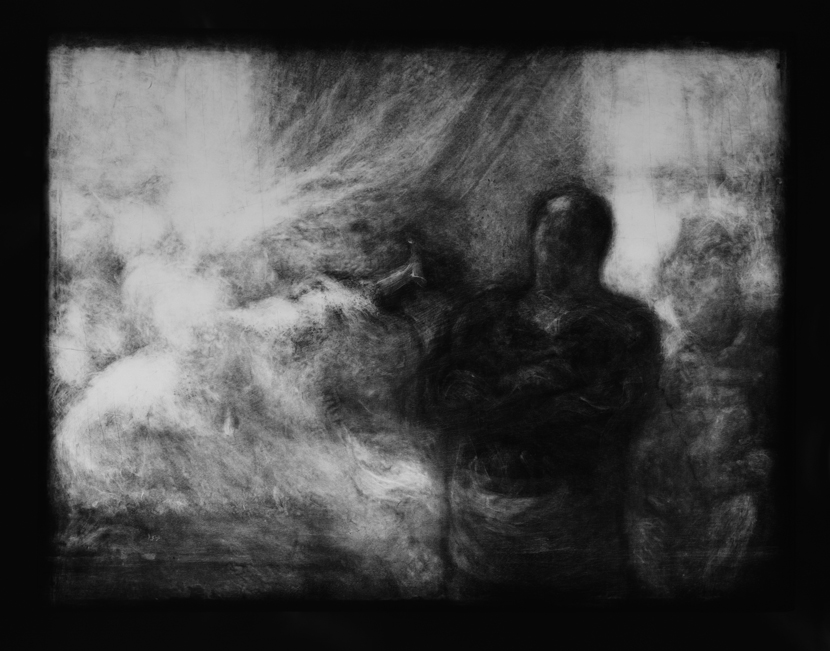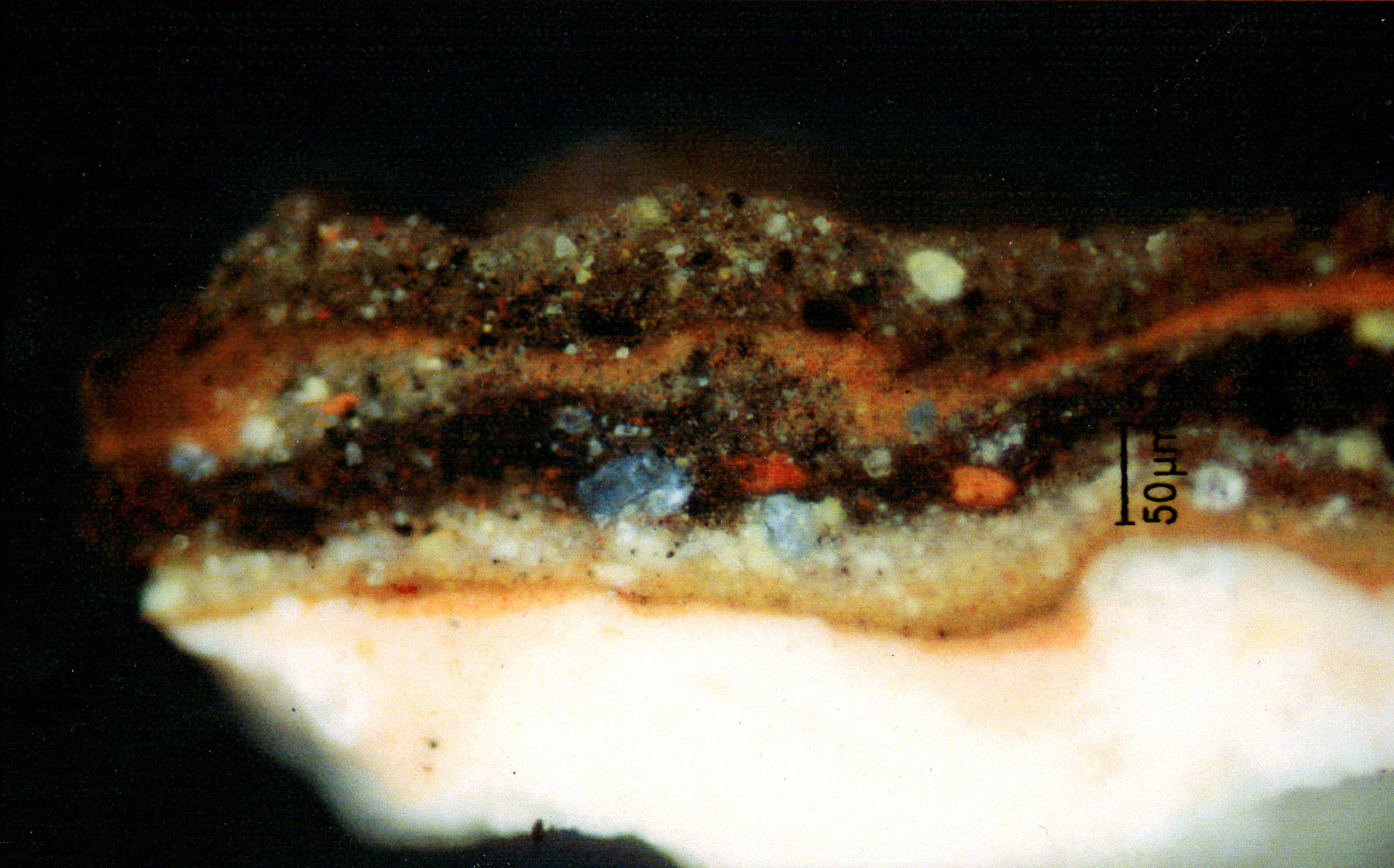To celebrate the opening of Made in the USA, we held a series of tweetups in the weeks leading up to the exhibition. Participants used #MyAmericanArt to share photos of their behind-the-scenes preview with friends. We started with a tour from exhibition curator Susan Behrends Frank:
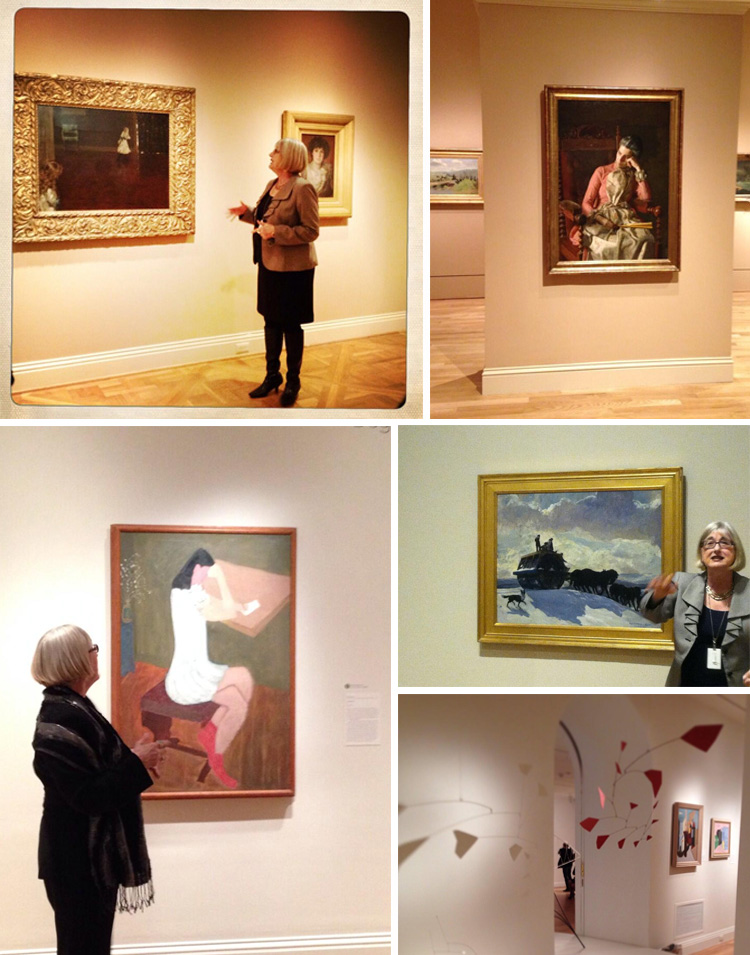
TWEETS (Clockwise from top left): “‘Everything is pushed to the corners.’ #myamericanart,” @sam_theriault; “Can a work of art be too realistic? People thought this one was at the time it was done. #MyAmericanArt,” @sbanks20; “Rockwell Kent went into nature to capture grittiness and drama: witness ‘The Road Roller.’ #myamericanart,” @museums365; “Great seeing 200+ old faves back from tour & home @PhillipsMuseum ‘Made in the USA,'” @efstewart; “Moving on to the Degrees of Abstraction room with Avery painting #myamericanart,” @jackievicino
Moved to the conservation lab to hear insights from Associate Conservator Patti Favero:

TWEETS (Clockwise from top left): “In the conservation room @PhillipsMuseum! #MyAmericanArt,” @swahilary; “I would die for these @KremerPigments in the @PhillipsMuseum conservation studio. #MyAmericanArt,” @studio9201; “Our tweeters get a chance to look at a #Gauguin through the microscope #myamericanart,” @phillipsmuseum; “Restoration and conservation tools. #myamericanart #phillipscollection #art #dc,” @sam_theriault
Then pieced together our own masterpieces based on works from the exhibition:
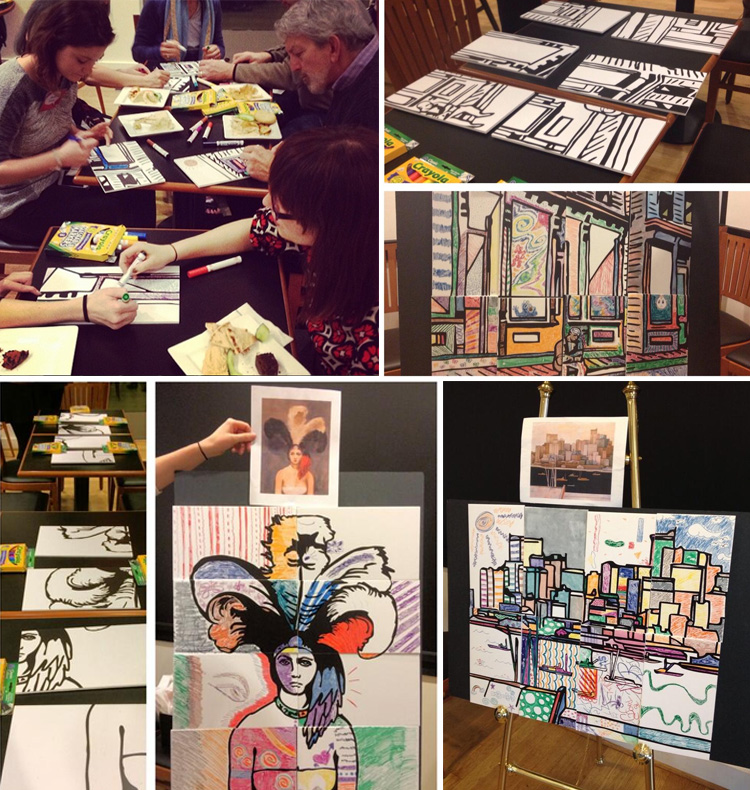
TWEETS (Clockwise from top left): “Now we’re making our own art! (With snacks) #myamericanart,” @philipsmuseum; “Before and after shot of collaborative art project at @PhillipsMuseum #myamericanart tweetup! You were a great host!” @danamuses; “Stefan Hirsch’s New York, Lower Manhattan, as interpreted by today’s #MyAmericanArt tweetup.” @Phillipsmuseum; “Before and after! #picstitch #myamericanart,” @VanitaKataria
See the rest of what our tweetup participants had to say on the Phillips’s Storify account, and join the conversation with #MyAmericanArt!

